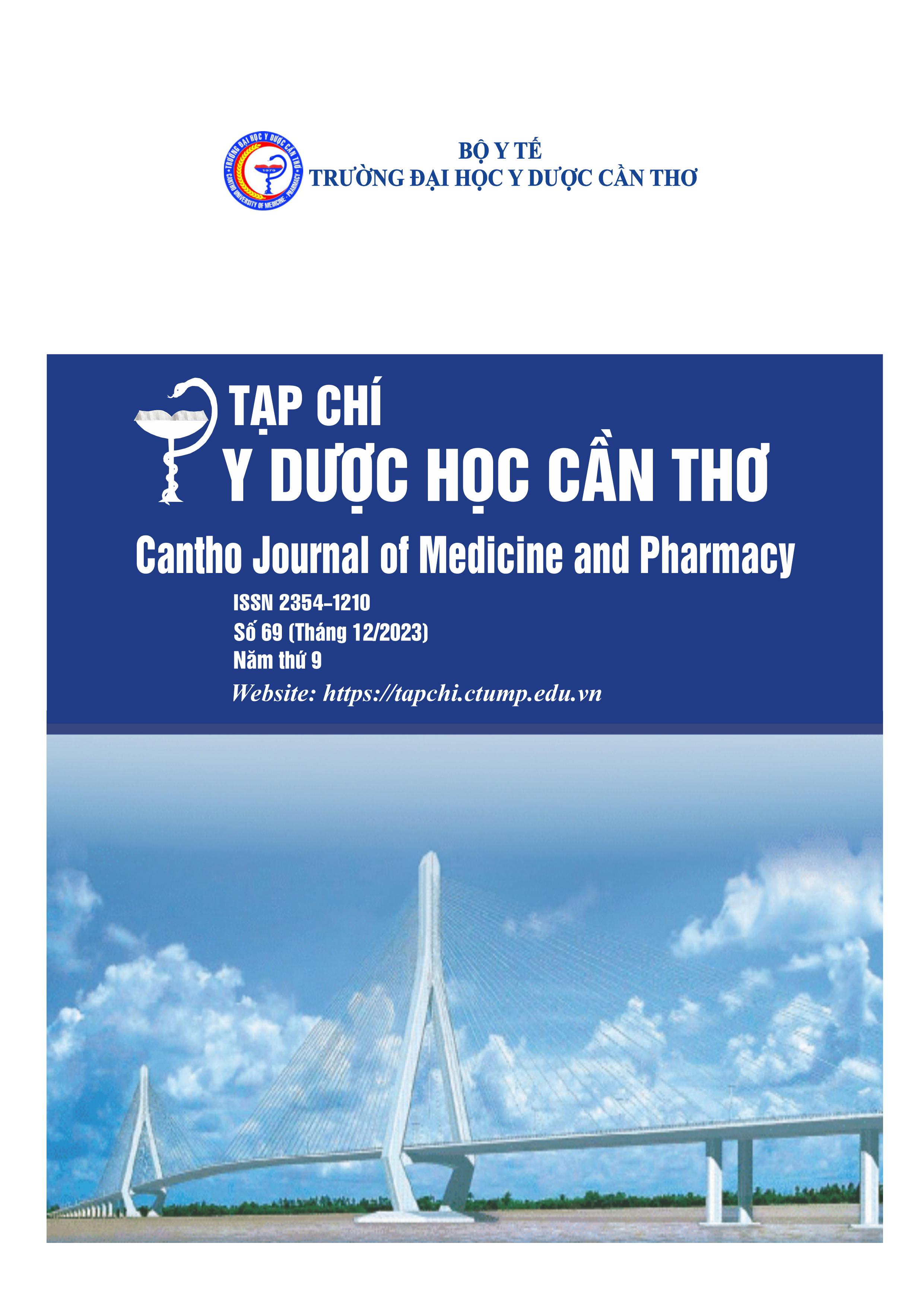RESEARCH ON THE HEPATOPROTECTIVE FUNCTIONS OF PYCNOPORUS SANGUINEUS EXTRACT
Main Article Content
Abstract
Background: Hepatitis is a common disease not only in Vietnam but also worldwide. This condition can lead to dangerous complications such as liver fibrosis, cirrhosis, liver cancer, and even death. Pycnoporus sanguineus has long been recognized as a valuable medicinal herb, numerous studies have been conducted on the biological and chemical properties of Pycnoporus sanguineus, particularly its anti-inflammatory, anti-cancer, antioxidant,... There have been a few specific studies on its hepatoprotective effects in Vietnam. Objectives: To investigate of the therapeutic effects of Pycnoporus sanguineus extract in supporting the treatment of liver injury by carbon tetrachloride (CCl4) in mice model. Materials and Methods: The material is extract from Pycnoporus sanguineus (MH225776). The model will be created using Swiss albino mice, inducing liver toxicity with carbon tetrachloride (CCl4), and using the extract to investigate its therapeutic effects. Results: The results showed that after 7 days of toxicity and giving the extract for 14 days at the same time, the level of enzymes ALT, AST, and MDA decreased compared to the control group. The analysis of mouse liver histology and morphology showed that the ethanol extract of Pycnoporus sanguineus mushroom had a significant effect in reducing liver inflammation compared to the control group. Conclusion: The Pycnoporus sanguineus extract exhibits the effect on supporting the treatment of liver diseases.
Article Details
Keywords
Pycnoporus sanguineus, hepatoprotective, carbon tetrachloride, mushroom extract
References
2. Tạ Thành Văn. Hóa sinh. Nhà xuất bản Y học. 2018. 353 - 365.
3. Trần Đức Tường. Nghiên cứu sản xuất và thử nghiệm hoạt tính sinh học của quả thể nấm Vân Chi đỏ (Pycnoporus sp.) từ phụ phế phẩm nông nghiệp. Trường Đại học Y Dược Cần Thơ. 2021. 101.
4. Lê Nguyễn Phương Thu, Trần Khánh Hải, Trần Đức Tường, Dương Xuân Chữ. Nghiên cứu độc tính cấp và độc tính bán trường diễn của cao chiết ethanol quả thể nấm Vân Chi đỏ (Pycnoporus sanguineus) trên chuột nhắt trắng. Tạp chí Y Dược học Cần Thơ. 2019. số 22-25, 556-563.
5. Trần Lưu Vân Hiền, Chu Quốc Trường. Tác dụng bảo vệ gan của cốm Livcol đối với chuột bị ngộ độc bằng Tetraclorua carbon. Nghiên cứu Y Dược học cổ truyền Việt Nam. 2006. số 17, 25-32.
6. D K Ingawale, S K Mandlik and S R Naik. Models of hepatotoxicity and the underlying cellular, biochemical and immunological mechanism(s): a critical discussion. Environ Toxicol Pharmacol. 2014. 37(1), 118-133, https://doi.org/10.1016/j.etap.2013.08.015.
7. Hamed H., Gargouri M., Bellassoued K., et al. Hepato-preventive Activity of Camel Milk Against CCl4-Induced Lesions In Mice. Res Rev Biosci. 2017. 12(2), 117.
8. Delgado-Montemayor C., Cordero-Pérez P., Salazar-Aranda R., & WaksmanMinsky N. Models of hepatoprotective activity assessment. Medicina universitaria. 2015. 17(69), 222-228, https://doi.org/10.1016/j.rmu.2015.10.002.
9. Yang C. L., Lin Y. S., Liu K. F., Peng W. H., & Hsu C. M.. Hepatoprotective Mechanisms of Taxifolin on Carbon Tetrachloride-Induced Acute Liver Injury in Mice. Nutrients. 2019. 11(11), 2655, https://doi.org/10.3390/nu11112655.


